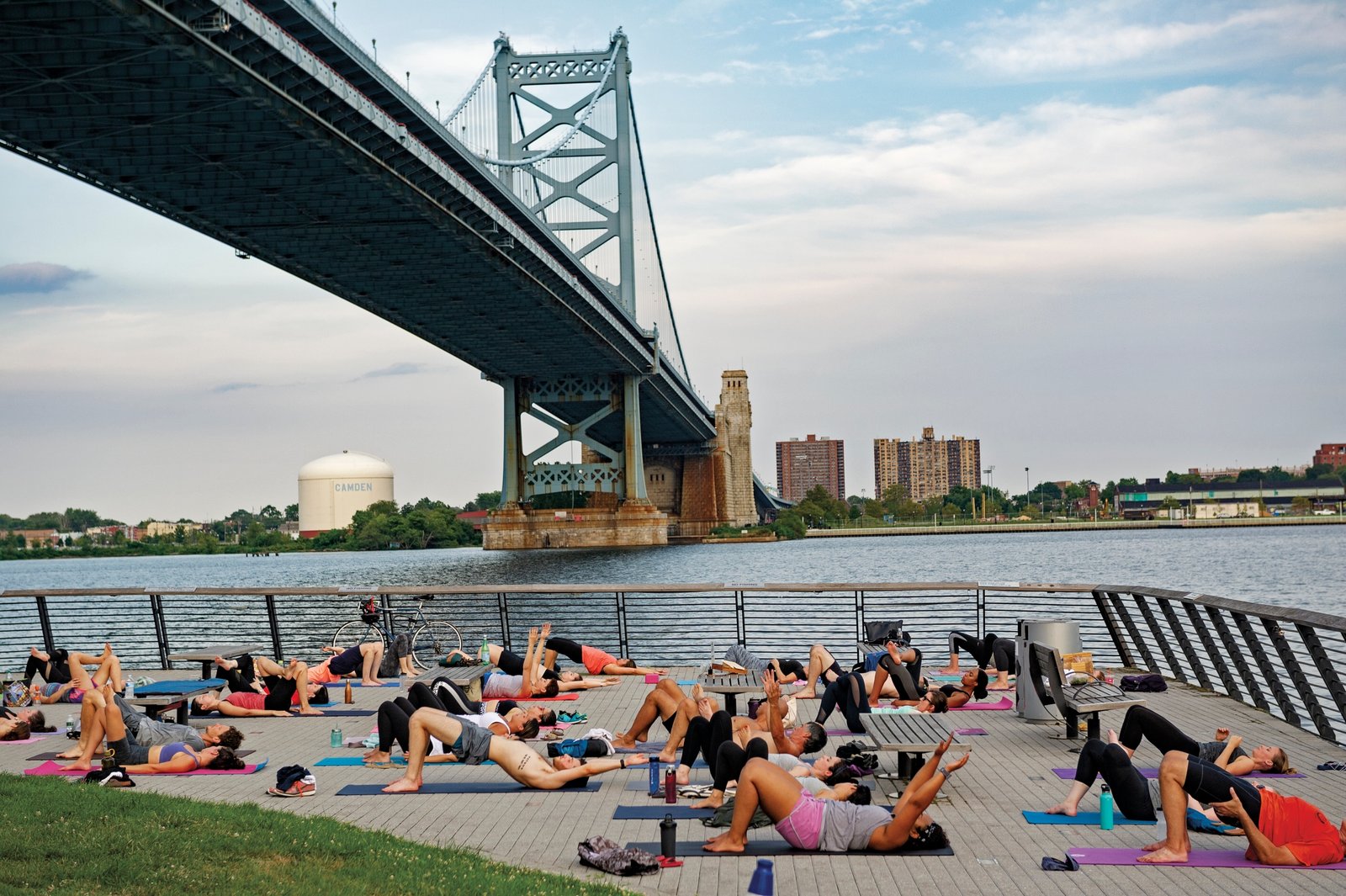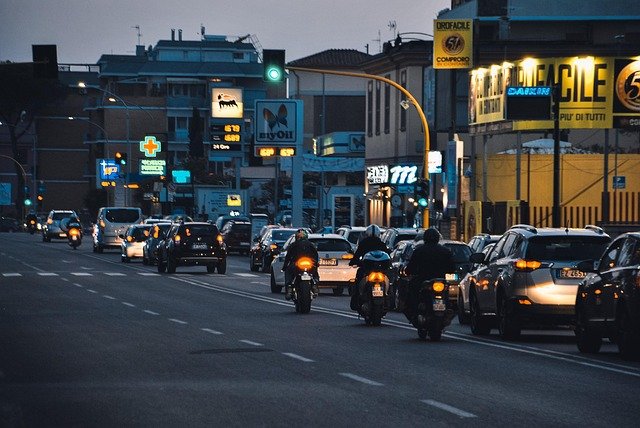Once an area of soulless parking lots and bygone shipping yards, San Francisco’s newest neighborhood, Mission Rock, just south of downtown, is now a waterfront work-live-play district. Here, open views of the Bay Bridge and Oracle Park are only outshined by pedestrian plazas, wide streets, and eight acres of green space, offering something rarely found in urban centers: breathing room. The 28-acre locale is a result of a years-long, multi-phase partnership between the San Francisco Giants, the Port of San Francisco, Tishman Speyer, and CMG Landscape Architecture. The goal? To reimagine what an urban neighborhood could feel like.
With the San Francisco Bay Trail curving around waterfront China Basin Park, car-free thoroughfares speckled with “street rooms”(usable street art for eating, climbing, or chilling), and outposts of some of the city’s hottest eateries (looking at you, Arsicault Bakery), the approximately 500 new apartments in two eye-catching buildings filled quickly, with residents eager to plug in to communal work spaces, or take advantage of the easy access to buses, trains, trams, and ferries connecting to Silicon Valley and the broader Bay Area.
(You can walk across San Francisco in a day. Here’s how.)
“COVID made us reassess what we value in open space and what the idea of city life can mean,” says Corbett Belcher at CMG. “We created a structure for a lively neighborhood that focuses on social and ecological well-being, a place where cars don’t dominate, people do.”
The need for reduced emissions and desire for enhanced quality of life in urban settings isn’t unique to this West Coast city. Across the country and around the world, car-free is having a moment.
Vilnius, Lithuania
Vilnius was named European Green Capital for 2025, thanks in part to the city’s investment in an eco-friendly public transportation system, which includes electric buses and trollies. Several new routes will be added by 2028 to widen car-free access, while roughly 62 miles of new bike lanes have been added since 2016.
The sustainability-minded city makes it easy for visitors to explore miles of pedestrian paths and designated routes leading to gardens, monuments, and museums on foot. Vilnius has also reduced pedestrian wait times at traffic lights to make foot-friendly commutes more efficient for residents.
Philadelphia, Pennsylvania
Philadelphia might be America’s most walkable city, but it’s also home to one of the country’s largest trail networks, spanning more than 400 miles (and growing), and connecting parks, job centers, suburbs, and rural communities. Visitors can roll or stroll along the Schuylkill River Trail (SRT) to beloved spots like the Philadelphia Museum of Art and Valley Forge National Historical Park.

Free yoga classes are sometimes offered on the Race Street Pier along the Delaware River in Philadelphia.
Photograph by Dina Litovsky, Nat Geo Image Collection
Indego Bike Share operates 250 stations and has 2,000-plus bikes across the city, with 40 new stations being added in 2025. Earlier this year, Mayor Cherelle L. Parker reclassified more than 35 miles of curbside lanes and all bike lanes as no-stopping or parking zones.
Paris, France
In March, Parisians voted in favor of the “garden roads” project, which will pedestrianize 500 streets over the next several years. Previous initiatives, championed by Paris Mayor Anne Hidalgo, have rerouted traffic to main avenues, leaving side streets car-free and more pleasant for walking and dining al fresco.
Visitors will also notice vehicles are absent along the Seine River quays, turning them into a haven for walkers, joggers, picnickers, and apéro hour pop-ups. Bike lanes are ubiquitous, well-marked, and heavily used, and with 1,480 docking points on the city’s Vélib bike share system—and more on the way—two-wheeling around the City of Light is safe, economical, and enjoyable.
Dubai, UAE
Approved by Sheikh Mohammed bin Rashid Al Maktoum in 2024, the Dubai Walk master plan has big pedestrian plans for the city of four million, including an integrated network of more than 4,000 miles of walkways featuring air conditioning, shaded spaces, and interactive digital screens, allowing for year-round use.
(Welcome to the adventure hub of the United Arab Emirates, where mountains, sea and desert collide)
Among the first being created are the 9.3-mile Al Ras Historical Route in Ras Al Khaimah and Al Souk Al Kabeer, and the Future Loop project, an elevated, climate-controlled pedestrian path that will connect 10 key landmarks including the Dubai World Trade Centre, Jumeirah Emirates Towers, Museum of the Future, and nearby metro stations.
Tampa, Florida
“Our goal was to bring people closer to what matters: Their home, offices, parks, restaurants, and entertainment,” says Josh Taube, CEO of Strategic Property Partners, the developer behind Water Street Tampa. Residents and visitors enjoy outdoor dining, concerts, and farmers’ markets in shady parks, yoga studios and gyms, and trendy hotels, like the Tampa EDITION, home to one of the city’s first Michelin-starred restaurants.
Adding to Water Street’s easy living is the free TECO Streetcar that makes stops at Amalie Arena, Ybor City, Tampa’s busy cruise ship port, and other popular downtown destinations.
Bogotá, Columbia
Bogotá is home to what might be the original pedestrian-friendly event, the perennial Ciclovía, which celebrated 50 years in December. What started as a citizen protest of the takeover of cars in the city has turned into an every-Sunday affair, when approximately 75 miles of streets are closed to vehicles and opened to an estimated 1.7 million people who walk, cycle, skate, and jog around the Colombian capital. Not only is it more popular than ever, Ciclovía has become a model for similar events around the world, such as CicLAvia in Los Angeles.
New York City, New York

The High Line is a 1.45-mile-long park built on a section of abandoned railway track in New York City.
Photograph by Diane Cook and Len Jenshel, Nat Geo Image Collection
Bryant Park is often cited as a catalyst for New York City’s pedestrian-focused renaissance, revitalized to award-winning status in the 1980s by the Bryant Park Corporation and CEO Dan Biederman. Biederman is also involved in New York’s Future of Fifth, a pedestrianization plan to begin in 2028 that will remove two lanes of traffic and widen sidewalks along Fifth Avenue between Bryant Park and Central Park.
No one appreciates an urban repurpose like a New Yorker, including The High Line, the former elevated railway transformed into a 1.45-mile greenbelt on Manhattan’s West Side that attracts an estimated eight million visitors each year. Little Island, the 2.4-acre park built on stilts over the Hudson River, opened in 2021 and draws more than one million annual visitors (70 percent from outside the city) to its lush walking paths and robust summer performance calendar. “People leave with a more favorable impression of a place if they have a pedestrian experience,” says Biederman.
Kimberly Lovato has written about travel news, food, lifestyle, and hotels for prestigious publications including National Geographic Traveler, Travel + Leisure, Virtuoso: The Magazine, AFAR, The Saturday Evening Post, and The Christian Science Monitor. She is also the author of a travel-themed children’s picture book. Follow her on Instagram @KimberleyLovato


